Before I became a kayaker, I was a canoe tripper. Canoe tripping taught me that you can never have too much gear—as long as the canoe stays afloat. I followed the same formula for kayak camping, convinced my comfort depended on bringing along everything I possibly could. Until one day I found out just how much it pays to pack lightweight.
Why lighten your packing list?
When I switched over to a sea kayak, my packing philosophy changed only slightly at first. With the limited space I was forced to think about the volume of gear I brought along. Over the years, however, I developed new packing and boat-loading techniques, which allowed me to bring increasing amounts on every trip. By the end, I was the guy who brought the most stuff even though I had one of the smallest boats.
Eventually my friend Sean Keelor organized a group intervention about my gear issues and gave me a valuable revelation: with less stuff, I could travel faster, keep more organized and thus enjoy kayak tripping more.
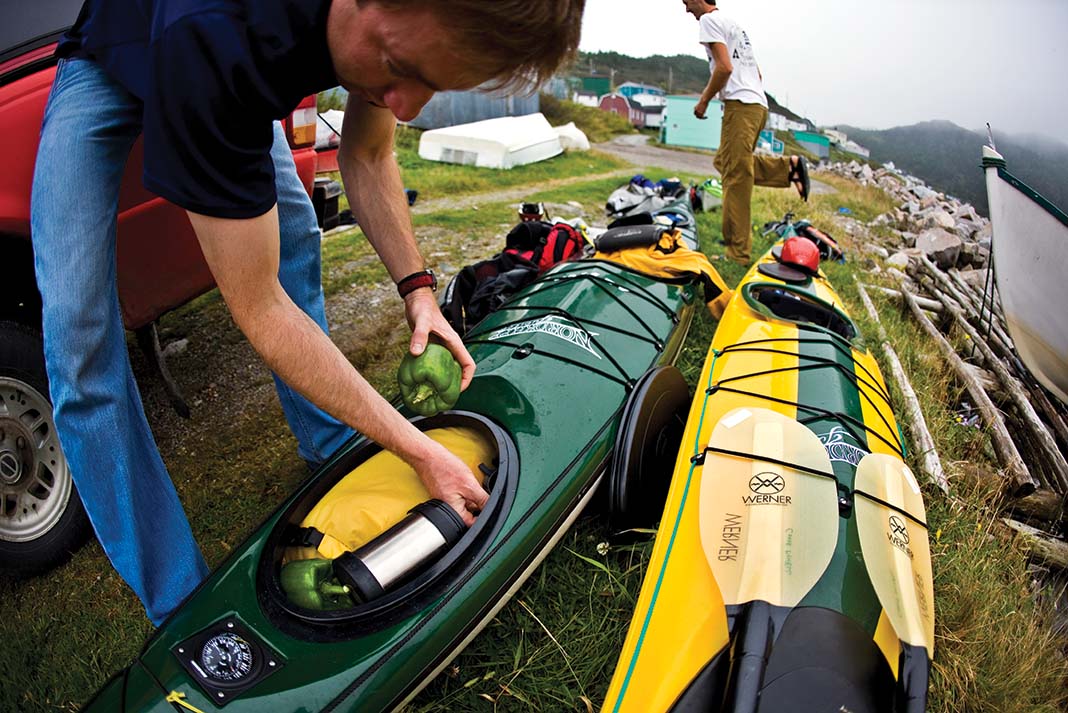
I used to think that since I wasn’t carrying the gear on my back, weight didn’t matter. In reality, the opposite is true. Similar to backpacking, travelling with a light boat and gear results in less draft in the water, making it easier to paddle. You move faster than your buddies and at the end of the day have some energy left to enjoy the best part of the trip, sitting around the fire.
5 reasons to try lightweight kayak camping
- Lighter boats travel faster and are more nimble.
- Low-impact: smaller tents, less fuel and less gear are lighter on the land.
- You’ll expend less energy and be less tired at the end of the day.
- Forces you to be more organized.
- For purists, the point of going into the wilderness is not to recreate your home in the backcountry, but to live more simply.
Other kayakers often ask me why I would even consider giving up so much. Doesn’t less stuff just mean less comfort? It’s a good question, but it hasn’t made a huge difference. I sometimes miss my big camp chair but the lightweight blue foam pad cut to the size of my butt works just as well and it’s 90 per cent smaller and lighter.
Of course, there are limits to how much you can cut down before it starts to undermine trip safety as well as the fun factor, but in my experience, you can cut quite a bit before you really start to run into that problem.
Sean and I decided to put the lightweight camping theory to the test last May. We planned a seven-day trip along the North Shore of Lake Superior from Wawa out and around Michipicoten Island. The trip involved very cold water and two 15-kilometre offshore crossings.
We still wanted to paddle our small performance boats, but with very limited space, extreme remoteness (due to the time of year) and cold water, we had to make some sacrifices. We needed extra clothing and safety gear to make it home safely so we had to closely examine all of our gear and leave any non-essentials at home. Here are some lessons we learned about how you can slim down and go light.
With less stuff, you can travel faster, stay more organized, expend less energy and enjoy your adventure even more.
12 tips for lightweight kayak camping
1 Take it one step at a time
Remember that there are various levels of commitment and a logical order in which to do things. You don’t need to start by getting rid of all your gear right away and replacing it with the lightest titanium pots and stoves on the market. Look for the obvious things you can do to cut down on both space and weight. Don’t cut the handle off your toothbrush before you’ve weeded out your oversized tent or the 20 pounds of extra food you’re carrying.
2 Pack more efficiently
There’s lots of space in your boat, but you need to learn where to find it. Don’t pack everything in large bags. Keep items loose or in small stuff sacks so they fill in the small spaces under the hatches. There are plenty of websites and books on packing your kayak. You will probably find that 10 to 15 per cent of your space was wasted because of poor packing.
3 Replace your tent
First off, when it comes to gear, look at getting a smaller tent. Do you need a four-man tent if there are just two of you? If you’re using space in your tent for gear storage, keep that gear outside or in your boat and get a smaller tent. All of your important gear should be waterproofed anyway for paddling. You’ll be surprised how much space you can save with a tent that packs down smaller.
4 Prioritize your gear
When packing, divide everything up into “must bring” and “would like to bring if there’s room” categories. Leave the “would like to bring” items home. If you really needed it, you would have moved it into the “must bring” category in the first place.
5 Make a packing list
Making a packing list will force you to organize and think about what to bring, rather than just throwing things in just in case. It will also help you speed up the process next time.
6 Measure your food
Keeping your food in check is a key method for cutting the amount of weight and bulk brought along. When people pack food, they pack way more than what they would normally eat at home. There seems to be an embedded fear of starvation. Leading up to a trip, watch how much food you really eat, then add only a little bit more to compensate for the extra calories burnt during the day.
7 Dehydrate your meals
If you are looking to really save weight and space, dehydrate your food. With excess water removed, your food will last longer and be considerably lighter. On your trip you can quickly rehydrate your pasta sauce back to its original form. With a little practice, you can easily dry your own fruit, beef jerky and pasta sauces.
Dehydrators are relatively inexpensive and pay for themselves quickly with the money you’ll save by drying your own food rather than buying it at the bulk food store. A great resource is the book Dry It—You’ll Like It, by Gen MacManiman.
8 Keep track of what you use
Keep close track of how much food you are bringing and write down the quantities of everything. When the trip is over compare how much you have left over with what you took so next time you know exactly how much you really eat on trip. Do the same for gear, writing a packing list and taking note of things that you really didn’t need so you won’t bring them next time.
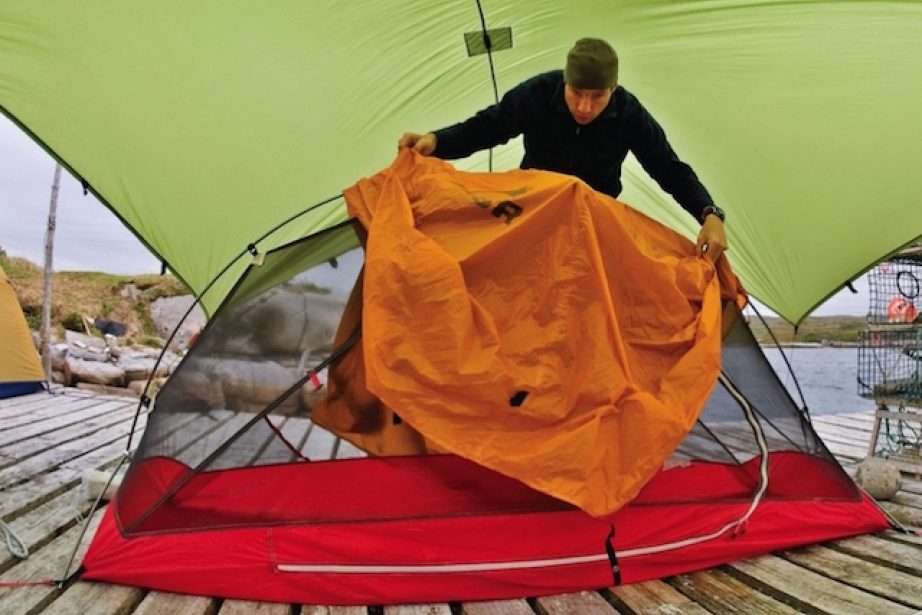
9 Eliminate redundancy
Like any good diet, the last five pounds are the hardest to shed. That is when you need to be creative in your gear selection. Find gear that will serve double duty and can be used for two purposes. The “spork” (spoon/fork combo) is a great example. Leave the plate at home since a bowl will work much better. Leave your raincoat at home. You don’t need it since you already have a paddling jacket.
10 Lose weight in your sleep
Choose an ultralight sleeping bag and compact sleeping pad. They will probably pack down around 50 per cent smaller than the set you currently own. When looking at any new gear—tents, clothes, sleeping bags, cookware—look not just at the weight but also how small it packs down.
11 Reno the kitchen
Get the lightest cooking gear you can find. Lightweight pot sets made of titanium, aluminum or lightweight alloys, though more expensive, will cut the weight down compared to stainless steel monsters. Replace your giant two-burner stove with a smaller, lightweight model.
12 Hop on the scale
The scale never lies. You’ll only know if you’re really cutting down when you’ve got the numbers to prove it. Weigh yourself on a bathroom scale, then weigh yourself holding all your stuff in a duffel bag or backpack and subtract your own weight to find out the total weight of your gear.
This article originally appeared in Adventure Kayak Magazine, Early Summer 2008 and in Paddling Magazine Issue 65. Subscribe to Paddling Magazine’s print and digital editions here, or download the Paddling Magazine app and browse the digital archives here.
Lightweight kayak camping requires a place for everything and everything in its place. | Feature photo: Ryan Creary




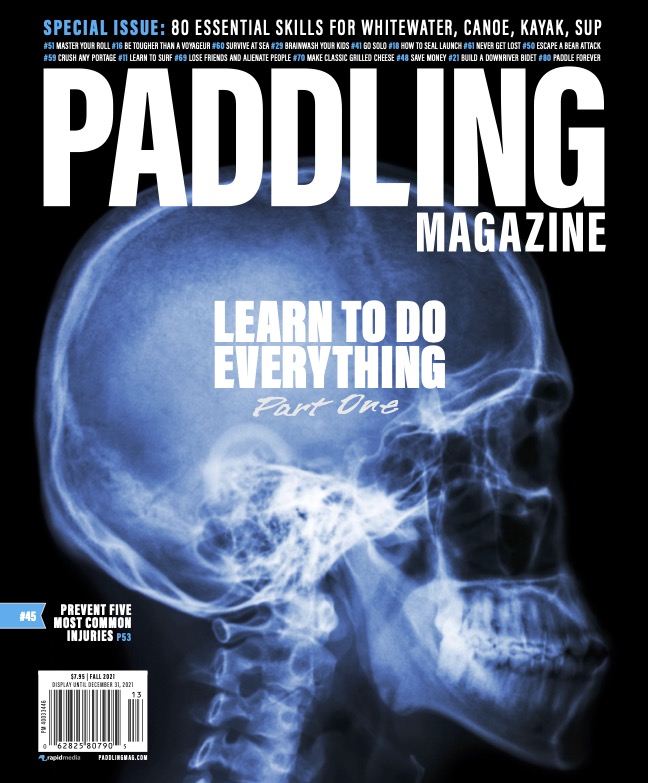
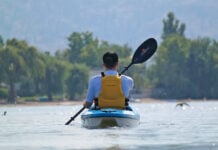
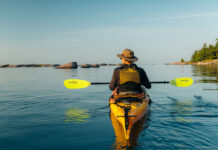

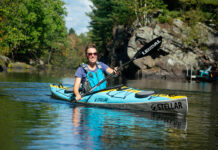


A good piece. I have to say though that the tent is one thing I won’t compromise on. Too many times I’ve been stuck having to erect my tent in the rain; not being able to do so under a tarp. For that reason it was imperative to me to find a tent that could be erected both fly and body together. But: I had to be able to afford it. That left me with only a couple choices and I settled on the Exped Orion 2. It fills all my needs save one: it isn’t light. At 6.7# it’s a chunkster; and doesn’t pack particularly small; but it’s home, and a good one. Other things I agree with totally; ditch the camp chair; dehydrate my food; measure it too; don’t overpack clothing. Just don’t go so light that when stuck in a 4 day rain you end up freezing your rear off because you didn’t pack that fleece.